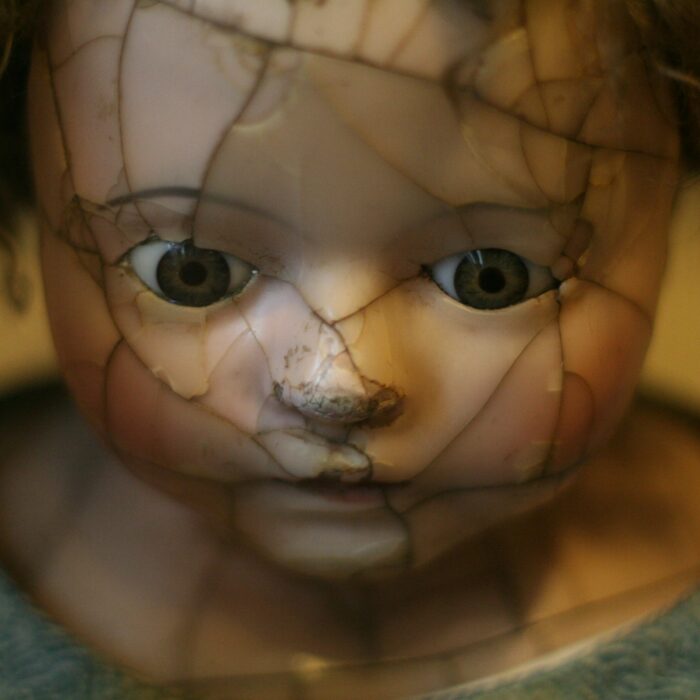You have no items in your cart. Want to get some nice things?
Go shoppingProwling the city with an urban fox hunter.
As part of our ‘Urban Life’ series, Markus Man goes on hunt with the latest sport that is shocking London.
The Guardian,
Monday, 30th January, 2013.
Holding his Kraven Crossfire M-26 taser rifle in one hand and his night vision goggles in the other, Eric Carr peers through the darkness into the garden behind the house in Brixton, south London. It’s the dead of night but Eric has a clear view through his night vision goggles, standing on the car bonnet to peer over the garden wall from the supermarket car park. Any fox that enters his line of sight is in for a shocking surprise.
[private]Pursing his lips around a specially designed whistle, Eric lets out a high-pitched squeak. In the darkness of the garden something dashes through a flowerbed. The next instant Eric pulls the trigger of his rifle and his quarry – a two-year-old vixen – is dead.
“They think the squeak is a mouse,“ says Eric. “They can’t help but move, even if it’s just to go prone. That’s when I shoot them in the head.”
Welcome to London’s latest sport – the world of Urban Fox Hunting.
At the beginning of what is to be a very long night, I meet Eric outside the Knacker’s Yard pub in Soho, the starting point for this year’s UK Urban Fox Hunting Championship (UFHC). Originally founded by a small club of Urban Fox Hunters, the UK UFHC has grown alongside the urban fox population in London, where some experts estimate there are over 30,000 urban foxes. Sitting on all the bar stools and at several tables in the pub are this year’s participants; all male, mostly under thirty, mostly white, with deep working-class accents – accents from Manchester, Newcastle and Leeds, all cities with burgeoning Urban Fox Hunter clubs. Army fatigues or boiler suits are ubiquitous. Some wear kneepads.
Eric shakes my hand and offers to buy me drink. He has viciously spiked-up blonde hair, and he keeps scratching red blemishes on his face – fading spots.
He notices me looking at his scratching and says, “Yeah, I know, I shouldn’t”. I’m surprised to see his taser rifle strapped to his back, like a bow to minimize discomfort. The Wildlife and Countryside Act 1981 prohibits the poisoning of foxes, and the Wildlife and Countryside Act 2011 prohibits the shooting of foxes using traditional firearms, but it is perfectly legal to use a taser as long as you possess the correct licence.
Despite the legality, the Urban Hunter’s use of taser rifles has become a contentious issue; three members of the public have been injured by Urban Hunters’ tasers, and last month a drunk hunter shocked and hospitalised a six-year-old girl who was wearing a Fantastic Mr Fox outfit. The negligent hunter has been jailed for three months, and the girl has made a full recovery.
Two hunters to our right are arguing the merits of M-26’s range considering it’s trade-off with stopping power – an argument that features their rifles being theatrically waved and pointed at each other. As the barmaid pours our beers, Eric can sense my unease and explains how his taser rifle works. He sticks out his index and middle finger to explain how the taser’s barbs pierce the fox’s skin.
“People who don’ know about this stuff think it’s the volts,” Eric says. “They see that a taser has a thousand volts or whatever and they think, “a thousand volts, that must be lethal!” That’s rubbish. It’s amps that kill you. Fifty milliamps across the heart will kill you. The tasers we use pull about two amps – they’re specially designed for foxes. Your average toaster, that pulls about five amps.”
So would it be more lethal to throw a toaster at a fox?
Eric just looks at me and says, “Well, no.”
Eric certainly knows his stuff; sipping his pint, he tells me about his South Bank University course, a GNVQ in Pest Control and Management. He is in his second year, working as a semi-professional (he is on an apprenticeship) pest controller during the weekends, taking part in competitions when he can. He hopes to gain a placement on a University exchange programme to California.
When I ask Eric why he enjoys Urban Fox Hunting he laughs and says, “The money mate, all the money!”
Eric explains how, after leaving school, he saw too many of his friends either take jobs in dead-end professions or turn to petty crime. A life flipping burgers or occasionally dealing class B drugs, Eric decided, was not for him. Eric explains that many homeowners – in areas like Mayfair, Notting Hill, Kensington – will pay extremely well to remove a pesky fox burrowed under expensive garden decking.
Removed, Eric emphasises, by any means necessary. Many residents just want an end to the late-night mating calls, the ant-sized fleas passed on to beloved cats and prize-winning poodles, and the countless piles of excrement and half-eaten rodents found amongst the foxgloves.
Even competitions pay well. Kraven Tasers, the world’s leading provider of hunting tasers, sponsors the UK championships alongside all of London’s borough councils. The prize money stands at £5,000; as well as the money, the winner joins the UK hunting team at the World Hunting Championships in Seattle.
I ask about Eric’s confidence tonight and he replies, “Yeah, I’m feeling pretty confident. I think I can win.”
As we finish our beers, the competition’s organiser and London Urban Fox Hunting chairman, a Mr Thomas Swift, calls for attention. He makes several jokes about how to avoid shooting toddlers (“shooting four legs – good, two legs – bad”) and several too about the eco-protesters who have been sabotaging hunts (“If they’re on two legs, they’re wearing sandals, have lentil juice dribbling from their lips and are shouting about Mother Gaia, then you should set tasers to stun”). I manage to ask Mr Swift if I he thinks the UFHC could become a respected part of London culture. “We are slowly gaining more respect in the community,” Mr Swift explains. “People understand we need to keep the urban fox population down. We hunt because we enjoy it, and we have as much right to partake in the sport as our countryside brothers.”
Mr Swift informs the Urban Hunters that their mobile GPS’s are about to be updated with fox locations. Tonight is what is known as a ‘tagged hunt’: the hundred and twenty foxes for tonight’s hunt have been caught and fitted with tags that mark their locations on the GPS systems of the Urban Hunters’ phones, by means of a special software download. Tonight is not just a hunt; it is a race.
For a few seconds it seems like every eyeball in the pub is focused on a tiny glowing screen. Staring at the two-dimensional representation of London on Eric’s mobile phone screen, we wait for a series of tiny red dots to materialise. When they do, the entire pub explodes into action as army fatigues jostle against boiler suits, grabbing goggles, whistles, rifles and phones. Before I know what to do, Eric is leading me outside – the nearest fox is a few minutes’ jog away.
I can’t wait in the car, can I?
“The run will do you good mate!” Eric says.
As Eric and I begin to jog through Soho, pubs packed with theatre attendees blurring past us, I notice several other Urban Hunters jogging in the same direction. We speed up.
Eric reaches the entrance to the narrow alley running at a right angle to the road before I do. He drops to one kneepad, pulls the butt of his rifle up to his shoulder and fires. He holds the position, firing more and more volts into his target.
He looks pretty chuffed with himself as he turns and says, “Bingo!”
The first dead fox of the evening.
The fox has slumped to the ground on its right side, next to a skip. I suddenly have a new appreciation for the phrase “dead still“. If it weren’t for the tongue rolled out of the mouth, the fox would look stuffed. The eyes are still bright and intense, amber ringed with black, like mascara. The fur is a deep, vibrant orange like paprika. The head almost T-shaped with the long, thin muzzle and wild tufts of hair growing around the ears.
The fox could be the star of a wildlife documentary – if it were still alive.
Eric stoops over the fox to remove the black plastic tracking clip attached to its leg. He clicks a miniature switch using his thumbnail, turning off the signal, and he pockets the clip.
As we stroll back to his car, I ask Eric if he has any sympathy for the foxes.
“You should see one of them eating. I’ve seen them getting their muzzles right in there in a dead rat, really licking up the guts. And they aren’t all cute and cuddly – they can be right lanky, mangy things. They can get sarcoptic mange, fox tapeworm, toxocariasis, rabies…”
The fox I saw looked healthy. Eric’s litany of illnesses and diseases is most likely his advertising routine to potential customers, the kind of people staring at Eric’s rifle from the warmth of the crammed pubs and bars.
The fox I just saw looked pretty healthy, I say.
“Well…you could say that was a Megan Fox,” he says, and laughs at his own joke.
As we reach his car, a dull red Ka, which looks secondhand, I ask Eric how he would spend the competition’s prize money.
“Well, a new car definitely,” he says, wiping a clean streak in the filth on the car’s roof. “Nothing too flashy, just something so I don’t feel embarrassed when I get in it, you know. Probably help out with the family. Pitch in more. Help get my mum’s new kitchen built.
Take the pressure off my brother. Stuff like that, I suppose.”
Take the pressure off his brother?
“Yeah, you could say he‘s the breadwinner, and he’s working full-time. On the mayor’s new pigeon project? He’s the real brains of the family.”
I assume Eric is talking about the mayor’s plan to phase out most of London’s organic pigeons and replace them with animatronics.
According to Eric, there is a problem with the prototype model; instead of the quintessential backward and forward head bob, a software bug leaves the fake pigeons bobbing their heads from side to side like choreographed dancers.
“He’s shown me a video on his phone – it’s proper funny.”
Eric checks his phone and tells me the nearest fox is about five miles south, in Lambeth. The inside of Eric’s car looks like it’s been used as garbage site; there’s an empty Strongbow bottle under my feet, half a pack of doughnuts on the dashboard, a KFC bucket with rotting bones on the back seat, scraps of paper – notes, notebooks, receipts – everywhere, an MFI catalogue open on a page detailing the Princess Diana kitchen suite, and underneath a dirty t-shirt is a taser manual.
We find the next fox rummaging through an overturned rubbish bin down an alley behind an Indian restaurant. Eric doesn’t blink as he fires the taser’s barbs into the unsuspecting fox’s left side. A thousand volts run along the silk-thin lines to the barbs, and the manically shaking fox slams into a standing bin, which falls unto the fox’s back but is shaken off by the convulsions.
One more plastic tracking clip.
After this, Eric’s luck begins to run out. We head to Brixton, where four red dots are gathered in close proximity. By the time we park the car a street away from Max Roach Park, one dot has disappeared. Eric arrives at the park (which is more of construction site due to the laying of a new road through the park) just in time to witness a group of hooded teenagers use a rottweiler to corner and disappear another red dot underneath a JCB. The teenagers are part of a growing trend of bored young people hunting foxes with their savage-looking pets. “It’s fun, and we’re not hurting anyone, are we,” one of the teenagers explains when I ask him why he hunts foxes. Eric says he can’t find the tag and advices the red hoodie to take his rottweiler to a vet.
The two-year-old vixen, shot in the back of a garden, improves Eric’s spirits. Clambering over the garden wall, nearly falling into the garden’s neon carp pond and staying low despite the lack of light within the house, Eric retrieves his third plastic clip of the night.
The last fox in Brixton is several streets away, which calls for another jogging session. The fox is skulking around the back of a Burger King with a massive car park, overlooked by a giant videoboard advertising Plucky The Zombie Duck II: Revenge of the Brown Loaf. This should be an easy tag for Eric – the fox is at the edge of the car park, framed against the brick wall of Burger King, in a clear line of sight. As Eric drops to one knee, the situation changes. There is the sound of screeching tires and a revving engine and a black van rumbles into the car park. The fox freezes, staring at the van, just long enough for Eric to fire.
The van’s doors open and a woman dressed as a fox bounces out. Eric explains that they part of an activist group. They call themselves Friends of Reynard (named after the fox of European medieval folklore) and seek to disrupt countryside fox hunts, urban fox hunts and pest controllers. They go around during hunts “rescuing” as many foxes as they can. Their website features a cartoon character called Reynard the Rascal and a picture of a dead vixen in a gutter by a road, her cubs still trying to suckle. The Friends of Reynard website has little sympathy for anything but the foxes; “Would you kill a stray dog or cat because it upset your rubbish bins? When it comes to killing foxes, we don’t think there is any justifiable reason – be it for money, pleasure or convenience, it‘s all selfishness on the part of the human.”
“A big round of applause for our big man here! Well done, oh proud and mighty hunter!” the woman-fox says as she dances around Eric, who stays silent as he retrieves his fourth plastic clip. Several protesters – a nondescript group of young looking men and women – begin to applaud. I’m a little disappointed that none of them are wearing sandals.
“Not going to keep the body? A trophy for the wall? Not interested in the mess you’ve made?” the woman-fox asks before one of the activists tells her to get back in the van. As he gets into his car, Eric gives the van the V-sign, and the activists let out a burst of cheers, applauding in mock appreciation, and the wind carries a rude word across over to the car.
It is a long night. The hunt goes on until three am. Eric doesn’t shoot any more foxes; he is repeatedly unlucky as he travels from red dot to red dot – Lambeth again, Lewisham, Hyde Park – each one vanishing before he arrives. He stays silent, clearly tired – his driving becomes erratic and he yawns continually. Small talk – on his mum’s kitchen, on his plans for the future, on his lack of girlfriend – is attempted but our energy levels are running low. Eventually I fall asleep in the passenger seat. When I wake up, I find we have pulled up in a car park, Eric asleep in the driver’s seat. We drive to a pub and Eric offers to buy me a drink.
I order a coke as Eric calls his friend on the hunt to ask about tallies. One hunter collected ten clips. Another, sixteen. It sounds like the average score for the night was five clips.
I ask Eric why he remained silent when the activists confronted him.
“I know some people don’t agree with what I do. But I can’t help what I enjoy. I just want to be the best I can be at my job. In my experience, people will think whatever they want – I’ve been judged, I know what they think and, frankly, I’ve learnt not to care. The truth is, I‘ve never been good at confrontation.”
Eric goes outside for a cigarette while I sit down with my coke and yesterday’s newspaper found at the bar. Out of the window, as the sky begins to drizzle, I see Eric kick the rear wheel of his car.[/private]
Richard Lemmer is a freelance journalist in London. Recent work has appeared in NME and Adbusters magazine. He is currently News Editor for CtrlAltShift. He has interviewed The Killers, Maroon Five, Plane Stupid, Scouting for Girls, MP Alan Johnson, The Yes Men, The Prince of Jordan and Corrine Bailey Rae. He is working on a short story collection.






I really enjoyed this story, has brightened my day. Thank you!
A witty and refreshing piece enlightening me to the Urban Fox Hunt culture. Had no idea such a thing existed. I like the descriptions of Eric and the poignant end; although it made me feel quite sad!